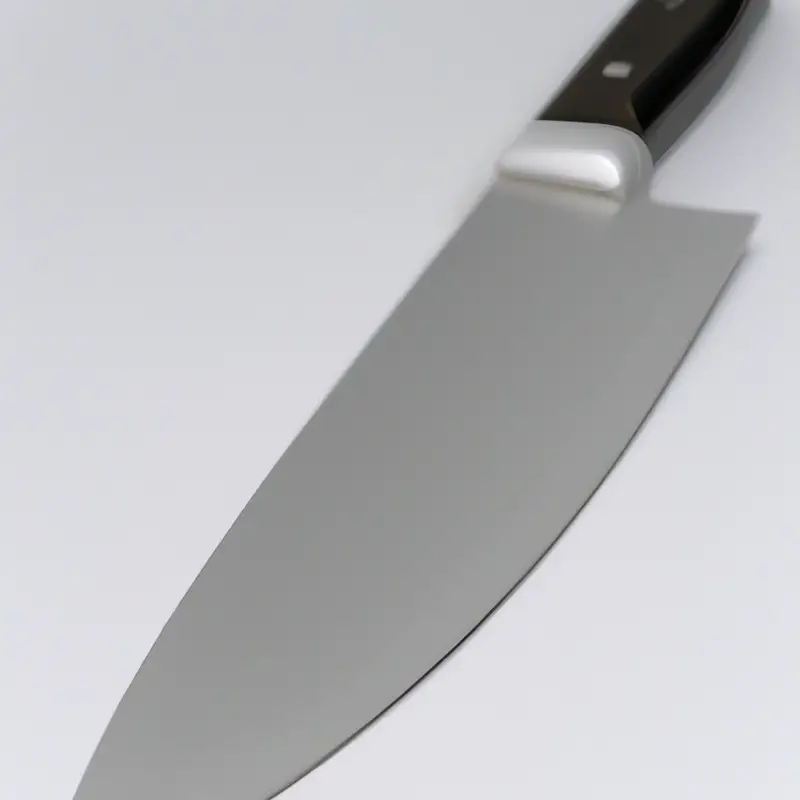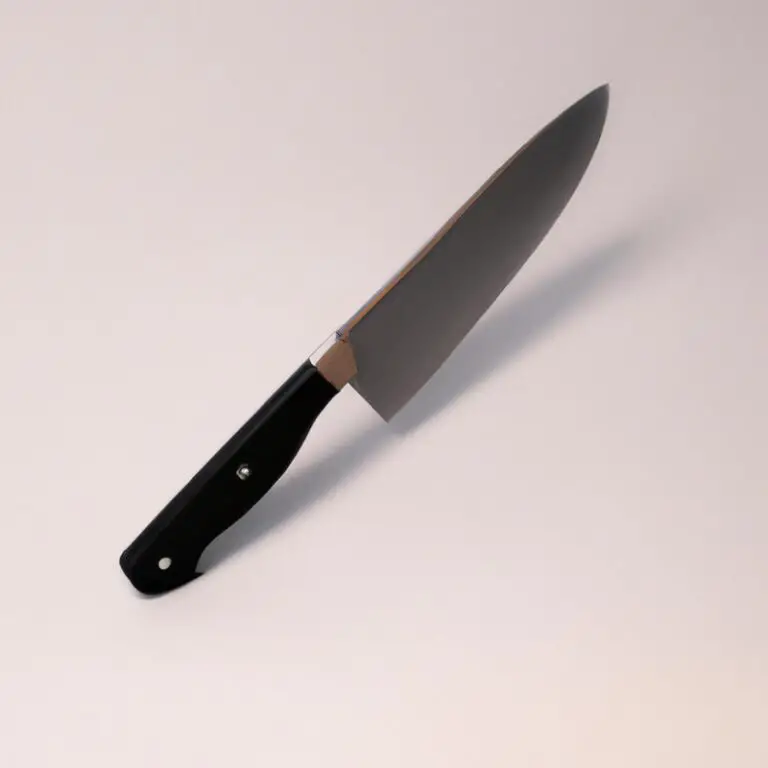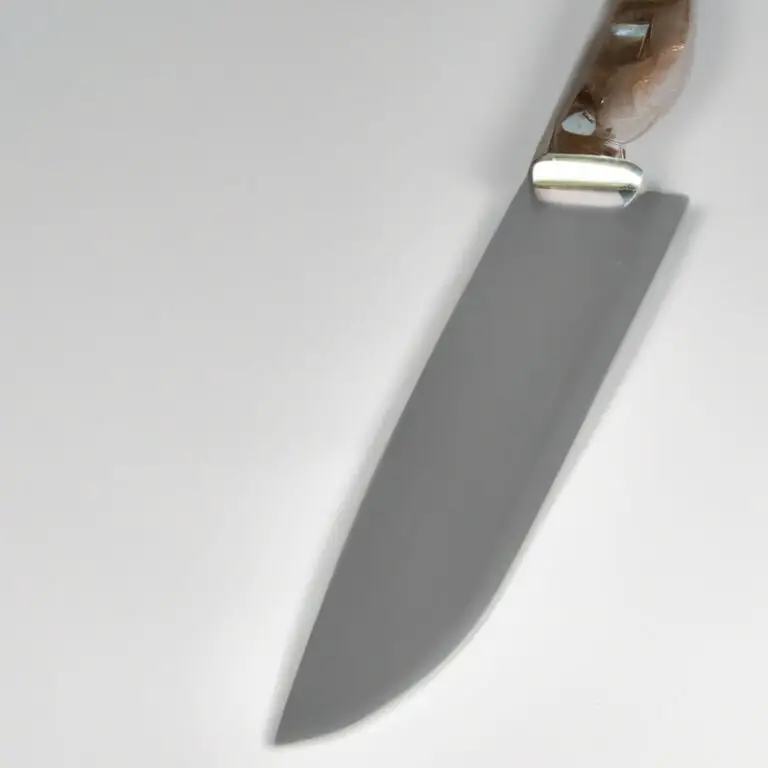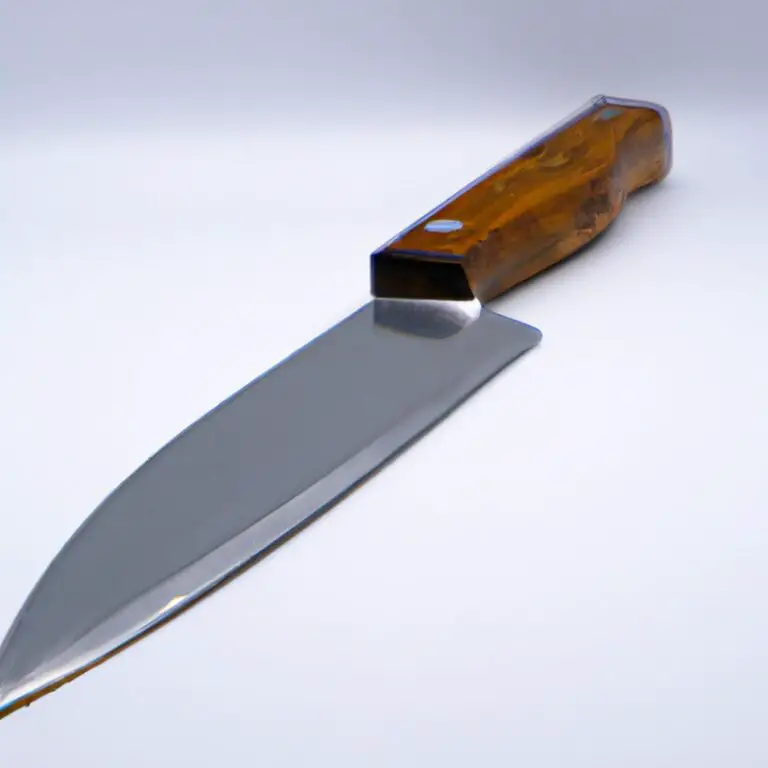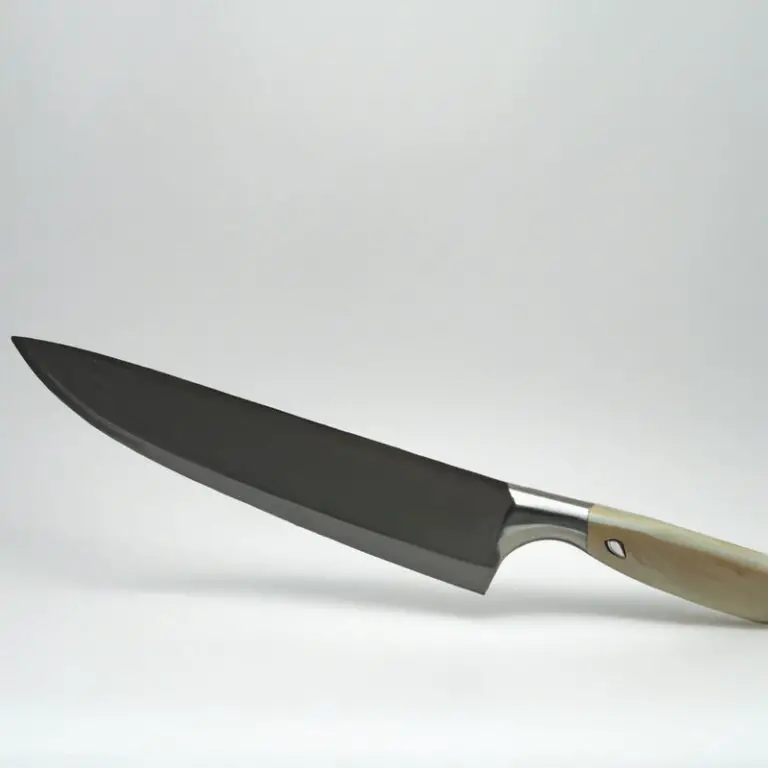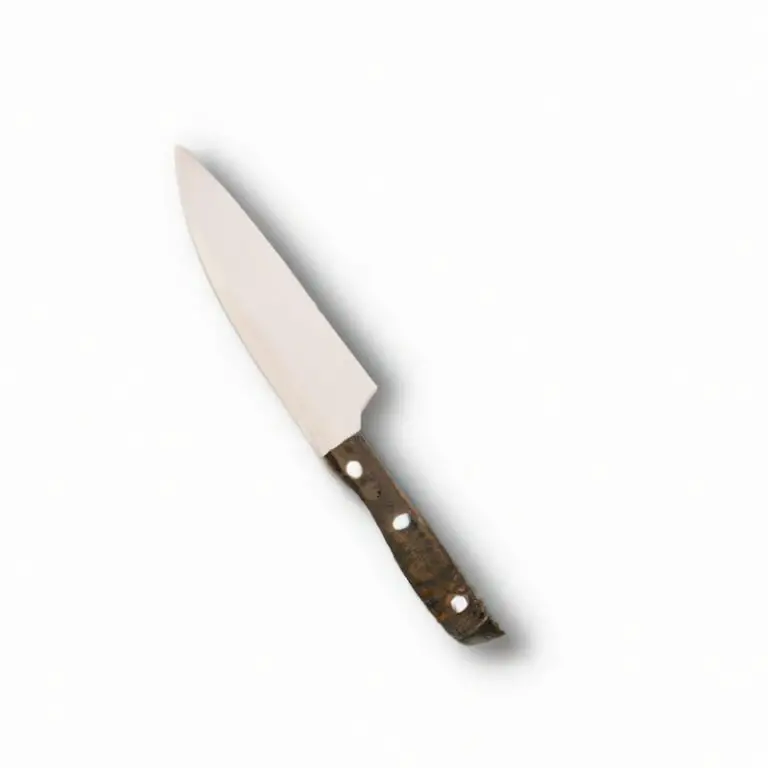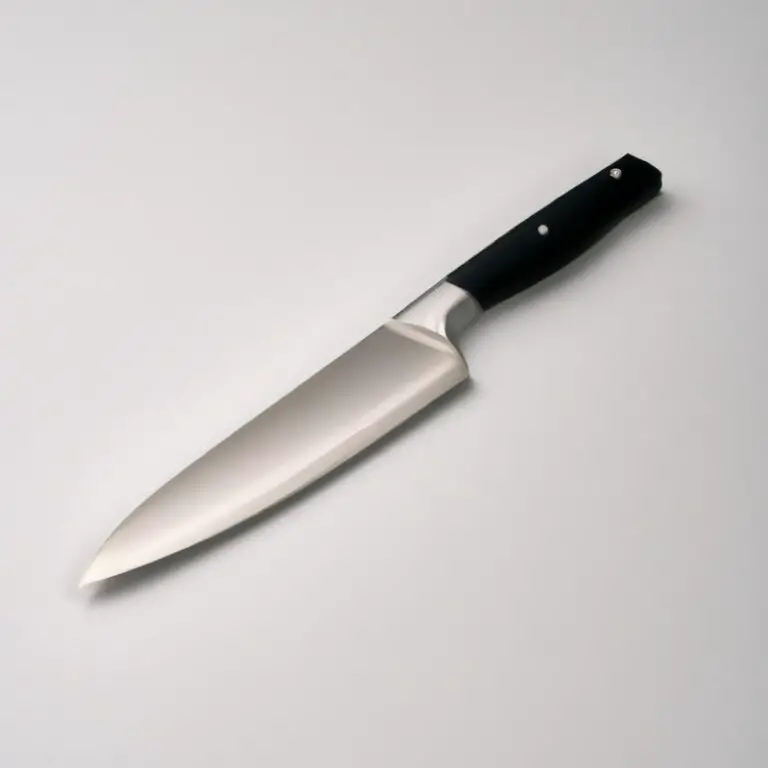What Are The Key Features Of a Chef Knife For Home Use? – Essential!
Key Takeaways:
- A chef knife’s weight and balance are essential for comfortable use and precision in cutting.
- A sharp blade and high-quality steel construction are necessary for efficient and safe food preparation.
- The handle should provide a secure and comfortable grip, fitting your hand’s size and shape.
- Look for a versatile chef knife with a blade length between 8-10 inches, suitable for various tasks in the kitchen.
Are you looking to up your cooking game in the kitchen? A quality chef knife is a must-have tool for any home cook.
But what exactly makes a chef knife stand out from the rest?
From blade material to handle comfort, there are several key features to consider when selecting the perfect chef knife for your needs. In this article, I’ll guide you through everything you need to know to choose the ideal chef knife for your home kitchen, including tips on maintenance, safety, and budget.
Get ready to take your culinary skills to the next level!
| Feature | Description |
|---|---|
| Blade length | The typical blade length for a chef knife is between 8 to 10 inches, depending on the user’s preference and intended use. |
| Blade material | Chef knives are commonly made from high carbon stainless steel, which is durable and resistant to rust and stains. |
| Handle material | The handle should provide a comfortable and secure grip, with materials such as wood, plastic, or rubber being popular choices. |
| Weight | A good chef knife should have some heft to it, with a balanced weight distribution that allows for effortless cutting. |
| Edge angle | The angle at which the blade is sharpened can affect its sharpness and durability, with a 20-degree angle being standard for most chef knives. |
| Bolster | A bolster is a thick shoulder between the blade and handle that provides balance, control, and safety by preventing fingers from slipping toward the blade. |
Blade Material: Understanding the significance of steel in a chef knife and how to choose the right blade material for your home kitchen
The blade material is essential in a chef knife. Steel is the most popular material due to its durability and sharpness.
High-quality steel is more resistant to rust and stains, making it easier to maintain.
When choosing a chef knife for your home kitchen, consider the type of steel used for its blade carefully. There are three common types of steel: carbon, stainless, and Damascus.
Carbon steel is durable, maintains sharpness, but is susceptible to rust and stains.
Stainless steel is rust-resistant, easy to maintain, and perfect for home use. Damascus steel has a unique design and is a combination of different types of steel, making it more durable and sharp than other steels.
Choose a blade material that fits your budget and cooking preferences.
Keep in mind that a high-quality steel blade can last a long time with proper maintenance.
Blade Shape: The importance of blade shape in a chef knife and different types of blade tips and edges for enhancing cutting efficiency
Blade shape is a critical factor in a chef knife’s performance and cutting efficiency. A well-designed blade shape optimizes the blade’s balance and ensures precise, controlled cuts.
Different types of blade tips and edges also impact the knife’s functionality.
For example, a pointed tip is ideal for piercing and detail work, and a straight edge is perfect for chopping and dicing. A serrated edge is useful for slicing through tough materials like bread and meat.
Understanding blade shape and different types of blade tips and edges can enhance your cutting experience, making your cooking easier, faster, and more enjoyable.
Handle Material: The role of handle material in a chef knife and the impact of comfort and grip on your cutting experience
The handle material of a chef knife plays a critical role in your cutting experience. The type of handle material used impacts not only the comfort but also the grip of your knife.
A comfortable handle reduces fatigue during extended usage and improves precision in cuts.
A good grip on the handle ensures that the knife is secure in your hand, reducing the likelihood of accidents and increasing your control over the blade. When choosing a handle material, consider how it feels in your hand and how it will hold up over time with regular use and proper maintenance.
Popular options include wood, plastic, and composite materials.
Ultimately, the handle material you choose will play a significant role in your overall satisfaction with your chef knife.
Balance: Why a balanced chef knife is crucial for precision cuts and reducing fatigue during extended periods of usage
A balanced chef knife plays a significant role in precision cuts and reducing fatigue during extended usage. The weight of the blade on the handle determines the balance of a chef knife.
This balance helps maintain control and stability while cutting and allows for more accurate cuts.
A well-balanced chef knife distributes the weight equally throughout the blade and handle. This balance also reduces unnecessary strain on the wrist and arm when chopping, thus reducing fatigue during long periods of use.
In summary, a balanced chef knife is crucial for precise cuts, improved control, and reduced fatigue.
Weight: The effects of weight on a chef knife’s performance and how to find the perfect weight for your specific needs
The weight of a chef knife is an essential factor that significantly impacts its functionality and performance. A heavy knife can increase the momentum of a blade and make it more efficient at chopping and slicing through thick and dense items.
On the other hand, a lighter knife can provide greater control and precision for more delicate tasks.
When choosing a chef knife, it is crucial to select a weight that matches your specific needs and cooking style. Consider factors such as the size of your hand, the types of food you frequently cut, and the duration of usage.
Finding the perfect weight for your chef knife will ultimately enhance your cutting experience and reduce fatigue during extended periods of usage.
Size: How to choose the optimal blade length for your home cooking and which sizes of chef knives are best suited for various tasks
When selecting a chef knife, it’s important to consider the blade length to suit specific tasks. A blade length of 8 to 10 inches is ideal for most home cooking needs.
However, a shorter blade of 6 inches is preferable for tasks such as peeling and trimming while a longer blade of 12 inches is best for slicing large roasts or briskets.
It’s essential to choose a blade size that you feel comfortable controlling to minimize the risk of accidents. When in doubt, go for a medium-sized blade that can handle a variety of tasks.
Maintenance: Understanding the importance of maintenance and care for a chef knife’s longevity and how to sharpen and clean your knife
Maintaining your chef knife is crucial for its longevity and overall performance. Proper care includes regular cleaning and sharpening.
When cleaning your knife, avoid using the dishwasher and hand wash it with mild soap and warm water.
Dry it carefully with a soft cloth to prevent rust or corrosion. Sharpen your knife regularly using a honing steel or sharpening stone to maintain its sharpness.
A dull knife not only affects performance but also increases the risk of injuries.
A well-maintained chef knife can last a lifetime and ensure efficient and safe kitchen operations.
Safety: Discovering best practices for safe handling of a chef knife, avoiding accidents, and protecting yourself and others in the kitchen
When it comes to using a chef knife in the kitchen, safety is of utmost importance. Here are some best practices to follow:
- Always grip the handle firmly with your fingers and thumb wrap around it, keeping your index finger on top of the blade for balance.
- Keep your cutting hand and fingers away from the sharp edge of the blade by curling your fingers in a claw shape. Use a cutting board to stabilize food during cutting.
- Always cut away from your body and other people in the kitchen.
- Keep your knife sharp to reduce the likelihood of slippage and injury, and always store it in a designated spot away from other kitchen tools.
- Avoid rushing or multitasking while using a chef knife and never attempt to catch a falling knife.
Following these best practices will ensure safety in the kitchen and protect yourself and others from accidents.
Budget: Navigating the various price ranges of chef knives and finding the best one to fit your budget and needs
Price is a significant factor to consider when purchasing a chef knife for home use. Chef knives come in different price ranges, from affordable options to high-end selections.
It’s crucial to find a knife that fits your budget while still meeting your needs.
Lower-priced knives often have softer steel and require more frequent sharpening. On the other hand, higher-priced knives feature harder steel that holds an edge for longer and requires less maintenance.
When it comes to budget, it’s essential to strike a balance between quality and affordability.
Consider your needs and the tasks you perform in the kitchen before making a purchase. If you’re a beginner or an occasional home cook, a budget-friendly knife will suffice.
If you’re a professional chef or a frequent home cook, invest in a higher-priced knife for long-term durability and performance.
Remember to read reviews and research different brands before making a purchase. Don’t let price be the only factor in your decision.
A high price tag doesn’t necessarily mean better quality, and a low price doesn’t always indicate poor craftsmanship.
It’s essential to find a knife that feels comfortable in your hand, has a sharp blade, and meets your specific needs within your budget.
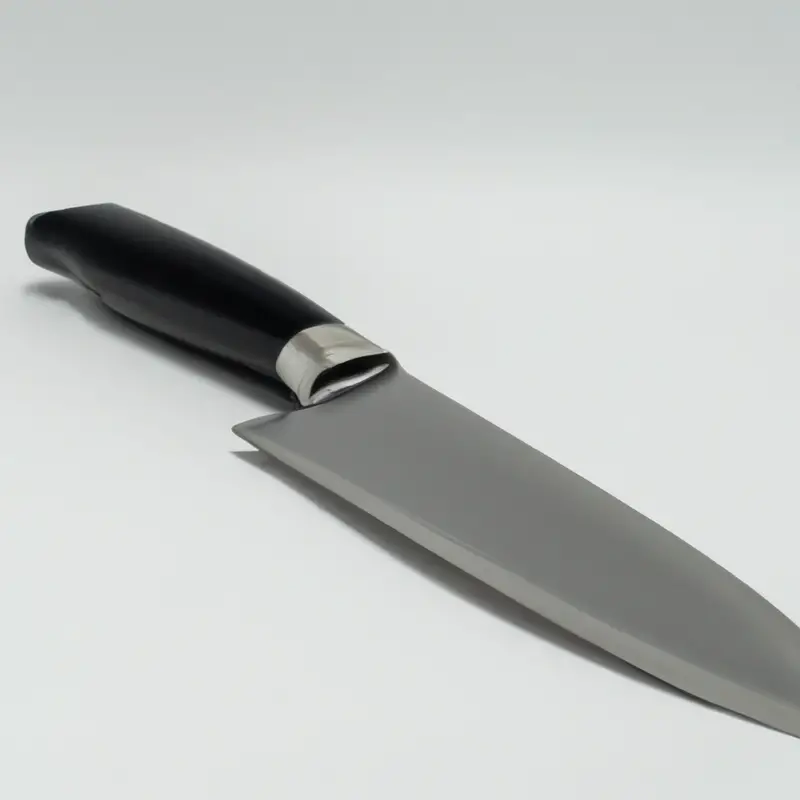
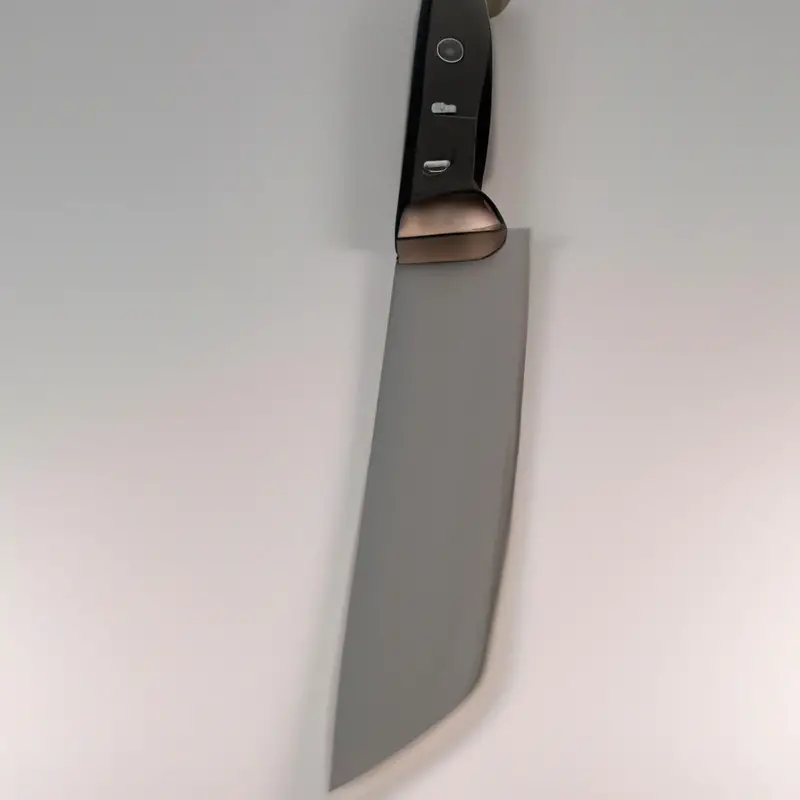
Pairing: Understanding how to pair your chef knife with other knives in your collection for an efficient and effective home kitchen setup
Pairing your chef knife with other knives in your collection can help you achieve a more efficient and effective cooking experience in your home kitchen. Some knives that pair well with a chef knife include a paring knife, serrated bread knife, and a utility knife.
A paring knife is perfect for intricate tasks such as peeling, trimming and slicing, while the serrated bread knife is ideal for handling crusty loaves of bread.
The utility knife is great for tasks that require more precision than a chef knife and is typically used for cutting small fruits and vegetables. When selecting knives to pair with your chef knife, consider the tasks you will be performing in your kitchen regularly.
Choose knives that can help you accomplish your work more efficiently.
Keeping them within reach while working will save time and give you a seamless experience. Pairing your chef knife with the right knives ensures you have the appropriate tool for any job that comes up in the kitchen.
It also makes cooking a joy.
Final Verdict
A chef knife is a critical tool in any home kitchen, and selecting the perfect one can significantly enhance your cooking experience. From the blade material to size, weight, and handle material, each feature plays an integral role in the knife’s performance and your ability to achieve precision cuts.
By understanding these key features, you can confidently choose a chef knife tailored to your unique needs and budget.
Remember to maintain and care for your knife properly and practice safe handling to ensure longevity and avoid accidents. With the right chef knife in hand, you can elevate your home cooking and unleash your creativity in the kitchen.
Trust in the information presented here to make an informed purchase and start cooking like a pro.

